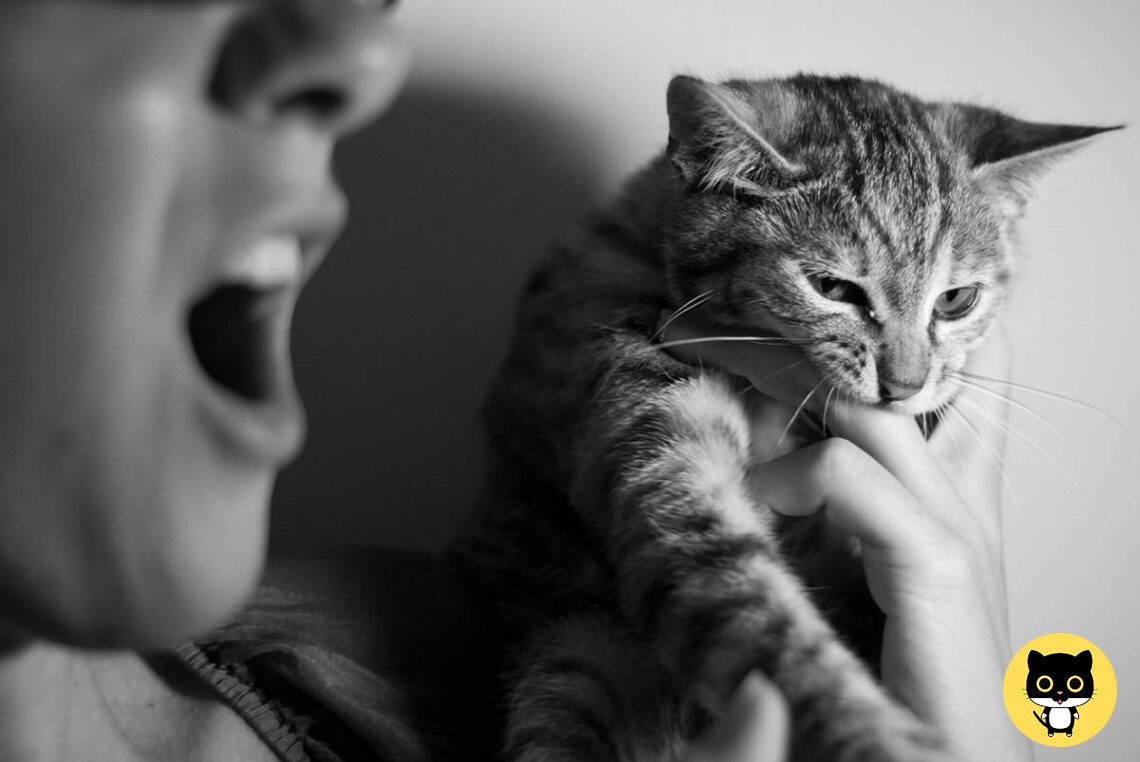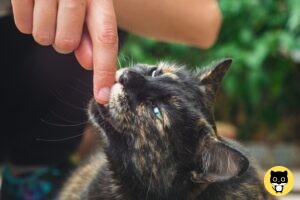Cats are fascinating creatures with their own unique ways of showing affection. One behavior that often puzzles cat owners is the act of “love biting.” You may have experienced those gentle nibbles and nips from your feline friend while enjoying a cuddle session. But what exactly are cat love bites and why do cats engage in this behavior? In this guide, we’ll explore the reasons behind cat love bites, how to interpret them, and what you can do to manage this behavior.
Understanding Cat Love Bites
Cat love bites are gentle nips or nibbles that cats give to their owners during moments of affection. Unlike aggressive biting, love bites are not intended to harm or break the skin. Instead, they are a form of communication and can signify various things depending on the context. Love bites often start with licking, gradually progressing into gentle nibbles. This behavior is reminiscent of a cat’s early interactions with their mother and littermates, where play and grooming sessions involve similar gentle nipping.
While the name “love bite” may suggest affection, it’s important to note that not all cats show love through this behavior. Some cats engage in love biting as a way to communicate their boundaries, overstimulation, or playfulness. Understanding the underlying reasons behind cat love bites can help you decipher your cat’s intentions and respond appropriately.
Reasons Why Cats Love Bite
1. Affection and Bonding
For some cats, love biting is a display of their affection towards their owners. It’s their way of showing that they feel comfortable and bonded with you. These gentle nips are reminiscent of their interactions with their littermates and can be seen as a sign of trust and closeness.
2. Overstimulation
Overstimulation is a common cause of love biting in cats. When you pet your cat for an extended period, their sensory receptors may become overwhelmed, leading to discomfort or irritation. Love bites can serve as a way for your cat to communicate that they’ve reached their threshold and need a break from petting.
3. Playfulness
Some cats engage in love biting as a form of play. This behavior is often seen in younger cats and kittens who are still refining their hunting techniques. Love bites during play sessions are usually gentle and should not be mistaken for aggression. It’s their way of channeling their energy and engaging in interactive play with their favorite human.
4. Communication and Boundaries
Cats have their own preferences when it comes to touch and physical contact. Some cats may love being petted in certain areas, while others may find it unpleasant or uncomfortable. Love bites can be your cat’s way of communicating their boundaries and indicating that they’ve had enough petting or prefer to be left alone.
5. Allogrooming and Hierarchy
Allogrooming, or social grooming, is a behavior commonly observed among cats in the same social group. Cats groom each other as a way to bond and reinforce their hierarchy. Love bites during grooming sessions can serve as gentle reminders of dominance and hierarchy within the cat’s social structure.
Interpreting Cat Love Bites
Understanding your cat’s body language and accompanying cues is crucial in interpreting their love bites accurately. While love biting is generally a gentle and non-threatening behavior, it’s important to pay attention to your cat’s overall demeanor and any signs of discomfort or tension. Here are some key indicators to help you interpret your cat’s love bites:
1. Relaxed Body Language
During a love bite, your cat’s body language should be relaxed and calm. They may be purring, kneading, or showing other signs of contentment. The absence of aggressive postures such as hissing, growling, or raised fur is a good indication that the biting behavior is not driven by fear or aggression.
2. Gradual Progression
Love bites typically start with licking and progress to gentle nibbles. The gradual escalation of the behavior is a sign that your cat is engaging in an affectionate act rather than an aggressive attack. The bites should remain gentle and not break the skin.
3. Context and Timing
Observing the context and timing of the love bites can provide insights into your cat’s motives. If the biting occurs during a petting session, it may signal overstimulation or a desire for a break. On the other hand, if the bites happen during playtime, it’s likely an expression of playful energy.
4. Other Body Language Cues
Pay attention to your cat’s overall body language while they engage in love biting. Signs of discomfort or overstimulation may include tail swishing, ear flattening, tense muscles, or a quick turn of the head to watch your hand. If you notice these cues, it’s important to respect your cat’s boundaries and give them space.
Managing Cat Love Bites
While cat love bites are generally harmless, it’s important to manage this behavior to ensure a positive and enjoyable interaction with your feline companion. Here are some strategies you can employ:
1. Recognize Limits and Boundaries
Observe your cat’s body language and cues to determine their tolerance for petting. Respect their preferences and avoid petting areas that they find uncomfortable. Focus on areas such as the head, chin, and behind the ears, which most cats enjoy being touched.
2. Adjust Petting Techniques
Experiment with different petting techniques to find what your cat enjoys most. Some cats prefer gentle strokes, while others may prefer a firmer touch. Pay attention to their reactions and adjust your approach accordingly.
3. Shorten Petting Sessions
Instead of prolonged petting sessions, try shorter but more frequent interactions with your cat. This can help prevent overstimulation and give your cat the opportunity to disengage from the interaction when they’ve had enough.
4. Provide Enrichment and Playtime
Engage your cat in interactive play sessions to channel their energy and provide mental stimulation. Use interactive toys, such as wand toys or puzzle feeders, to keep them entertained and prevent excessive rough play or love biting.
5. Positive Reinforcement
Reward your cat for appropriate behavior and gentle interactions. Offer treats or praise when they engage in calm and non-biting behavior. Positive reinforcement can help reinforce desired behaviors and create a stronger bond between you and your cat.
6. Consult a Professional
If your cat’s love biting behavior becomes excessive, aggressive, or difficult to manage, it may be helpful to seek the advice of a professional, such as a veterinarian or animal behaviorist. They can provide specific guidance tailored to your cat’s individual needs.
Love hurts? Tips to share? Please register to leave a reply below and to post in the Forums.



